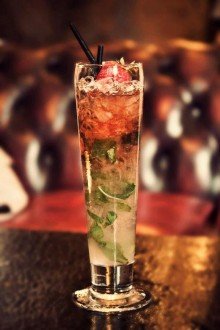Elderflower, one of our most recognisable and abundant wild foods and a flavour which has made the transition from the foraged niche into the mainstream. It may not however, to the novice, be immediately apparent how to harness the flavour of this most fragrant of hedgerow blossoms. After all, unlike a fruit or leaf it is rarely eaten in its raw form. A simple cordial provides the solution, capturing the floral bouquet and preserving for use beyond the short season. Though commercially produced elderflower cordial can be readily and cheaply obtained, it often fails to capture the true complexity of the wild blossoms so it is well worth making your own. The cordial can then be used to impart a whiff of spring sunshine to a whole range of both sweet and savoury recipes.


Elder flowers from late May or early June, fading by the end of July but this is of course dependent on the climate each year and even the microclimate of a specific area. Where inland trees have been blooming for some weeks, only now are the bushes near my coastal home beginning to flourish. Pick for immediate use, ideally on a warm day, when their aroma will be most fully released. Left just a few hours, the scent begins to turn from honeyed Muscat to something nearer cat’s pee, somewhat less alluring! Choose large white blooms, freshly opened, avoiding closed buds and those flowers which are yellowing and therefore past their best. This recipe is taken from Diana Henry’s “salt sugar smoke” and is as good as any I’ve found.
Elderflower Cordial
To make 2 litres:
25 heads very fresh elderflowers
1.5kg granulated sugar
3 unwaxed lemons
75g citric acid (available from chemists)
1.5 litres water
Shake the blossoms well to remove any bugs. Peel the lemon zest in large strips and slice the flesh thinly. Put in a bowl with the elderflower.
Bring the water and sugar to the boil, stirring to dissolve. Pour over the flowers and lemons and stir in the citric acid. Cover with a cloth and leave in a cool, dark place for 24 hours to infuse.

Strain through a muslin cloth and pour into sterilised bottles.
The cordial will keep for around a month, refrigerated. To preserve for up to a year, put the bottles (be sure not to overfill) in a water bath. Completely cover in water and bring to a simmer, simmer gently for 20 minutes.
Tucked away behind the ballroom, at The Bull Hotel, Bridport, is the cosy and intimate Venner Bar. Here innovative cocktail recipes are served alongside old favourites in a setting which feels part gentleman’s club, part bohemian den. They let me into the secret of their most popular house cocktail, the Hedgerow Mojito.

Hedgerow Mojito
In a sling glass add 30ml lemon juice and 15ml gomme, add to this crushed ice and a small handful of mint leaves, give them a clap to release the aroma. Next add 40ml Elderflower liqueur and churn, top with crushed ice and add 25ml of Sipsmith sloe gin. We use Sipsmith as it’s a dry sloe gin so still fruity yet not sweet to balance with the elderflower. Garnish with berries in season, mint sprig and elderflowers.
The Venner bar is run by Lloyd and OC and is open from 5pm until late Wednesday to Saturday.
Next week, more recipes using elderflower.
Alison Smith @chefalismith







